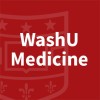
Community Health Worker And MHealth to ImProve Viral Suppression
HIV/AIDSThe overall goal of this study is to evaluate the effects of the CHAMPS intervention for people living with HIV (PLWH) in a randomized controlled trial. The proposed trial is scientifically significant in representing a principled and systematic effort to test the efficacy of a combined community health worker (CHW) and smartphone intervention linked to a smart pill box for antiretroviral (ART) adherence in PLWH in the United States (US). Guided by a rigorous theoretical model of supportive accountability and building on preliminary work, this intervention has the potential to enable PLWH to self-manage their ART regimens while CHW monitor their ART adherence in real-time ultimately leading to viral suppression and ART adherence.

ADAPT for Adolescents Adolescents
HIV/AIDSAdolescents and young adults (AYA) with HIV face unique challenges to engagement in care and their ability to achieve optimal health outcomes. The investigators hypothesize that developmentally-tailored behavioral interventions will improve engagement in HIV care and viral suppression (per current MOH guidelines) among AYA with HIV in Kenya. This two stage study will initially randomize 880 AYA with HIV to either standard of care (SOC) or electronic navigation to prevent treatment lapse. Participants who have a lapse will be re-randomized to SOC, in-person peer navigation, or conditional cash transfers. Formative work will be conducted initially to tailor the interventions to AYA and then later to assess AYA perception, experience, and satisfaction with the interventions. We will evaluate the most effective and cost-effective intervention and sequence of interventions to inform HIV program managers, public policy makers, and other key stakeholders the best approaches to improve engagement of care of AYA with HIV.

Reaching 90 90 90 in Adolescents in Zambia: Using All Our SKILLZ
HIV InfectionsPregnancy Related2 more"SKILLZ," is a mixed methods evaluation of the Grassroots Soccer (GRS) SKILLZ Package based in Lusaka, Zambia. The package is made up of three football-based programs: (1) SKILLZ-Girl - implemented in schools as part of a 10-week program culminating in a tournament event; (2) SKILLZ-Club - implemented as an ongoing extra-curricular activity after the completion of SKILLZ-Girl; (3) SKILLZ-Plus - a clinic based football group targeted at girls that are HIV-positive. The programs work together to build a continued support system which encourages uptake of Sexual Reproductive Health (SRH) and HIV services, while facilitating ART adherence (for HV-positive participants) and continued engagement with health services over the long-term (whether to contraceptive methods, HIV prevention services, HIV repeat testing, and/or HIV treatment and care). The study team has developed an enhanced SKILLZ-Girl offering, which will include a comprehensive module on HIVST, contraceptives and PrEP, access to a nurse during the implementation of sessions and the additional offering of HIVST and contraceptive services at the event along with ongoing engagement through the SKILLZ-Club program (Enhanced Arm) , The central hypothesis is that this enhanced curriculum will increase HIV testing and contraceptive uptake compared to the standard SKILLZ curriculum & standard event (SOC Arm). The investigators further hypothesize that the intervention in the enhanced arm will positively and directly affect a number of mediating factors including attendance at soccer events where community-based SRH services are offered, SRH knowledge, empowerment, self-confidence, and perceptions of gender balance, and (reduced) stigma. For girls found to be HIV-positive, the follow-on SKILLZ intervention (SKILLZ-Plus) has been designed to facilitate linkage to HIV care and treatment, reduce HIV-related stigma, increase disclosure to family and partners, increase feelings of social support, empowerment, self-efficacy, and ultimately adherence to ARVs, viral load suppression (VLS) and retention in HIV care and treatment. This study will be conducted in up to 32 secondary schools that GRS currently serves in the Lusaka Urban District.

iTransition Development
Human Immunodeficiency VirusHIV SeropositivityYouth living with HIV are at high risk of falling out of care when they transition from pediatric to adult care. The investigators are proposing to develop a mobile app to help both clinical providers and patients navigate this process.

Community Intervention for HIV Testing & Care Linkage Among Young MSM in Bulgaria
Acquired Immunodeficiency SyndromeHIVYoung men who have sex with men (MSM) in low- and middle-income countries often do not seek out HIV testing, are unaware of their HIV-positive status, and do not receive early medical care, compromising their health and contributing to downstream disease incidence. This situation is of great concern in post-socialist countries of Eastern Europe, where stigma about HIV/AIDS and same-sex behavior are great, HIV epidemics are still increasing, and the health needs of young MSM are rarely acknowledged or addressed. The planned research will be conducted in Sofia, Bulgaria, where MSM account for nearly half of HIV infections. The study will be conducted in two phases.

30-to-90 Day Challenge: Effects of Alcohol Cessation on Health Outcomes
Alcohol DrinkingChronic Inflammation3 moreThe objective for this project is to determine whether how certain behavioral and health functions change in persons with heavy drinking when they stop (or reduce) drinking for 30 days, and whether changes continue for up to 90 days. The study will also identify barriers and facilitators related to drinking reduction. The project will focus on clinical comorbidities including HIV disease control, cognitive and brain function, liver abnormalities, and chronic inflammation. The study teams propose to enroll 140 HIV+ and 40 HIV- adults with heavy drinking, and then use Contingency Management (CM) with financial incentives to encourage participants to maximally reduce alcohol consumption for 30 days. Participants will be required to wear an ankle biosensor (SCRAM monitor) at all times, which is used to monitor participants' drinking behavior. At 30 days, participants will complete a full day of follow-up, including cognitive testing, neuroimaging, blood testing, liver Fibroscan, and questionnaires. Many participants will also provide a stool sample for gut microbiome assessment at each time point. At 30 days, participants will participate in a motivational interview to discuss perceived benefits and obstacles to drinking reduction, and most participants will continue CM to 90 days (but can opt out at this point). Participants will complete another full-day assessment at 90 days, at which point persons may choose to drink or not on their own (no more CM). A final assessment will be conducted at 12 months. This A-B-A design will enable us to clearly identify whether alcohol effects on cognition and brain function are reversible in the context of HIV, and analyze specific cerebral and systemic pathophysiological factors contributing to these effects. The inclusion of HIV- adults will enable subgroup comparisons of alcohol reduction effects in the context of HIV vs. no-HIV. These HIV-negative participants will be recruited from the same settings as our HIV+ participants, and will include a similar proportion by age, race, and gender as the HIV+ participants. The study team will use information from the MI data and our other assessments to elucidate factors that predict both short term (during CM) and long-term (1-year) alcohol reductions, and study how changes in alcohol consumption affect important HIV clinical outcomes that will be monitored over time.

The Outreach and Prevention at ALcohol Venues in East Africa Study (OPAL-East Africa- Aim 2) (OPAL-Aim...
HIV/AIDSThis study will evaluate the effect of a brief alcohol counseling intervention on PrEP and PEP adherence among adults with heavy alcohol use at high risk for HIV, while gaining insights into the facilitators, barriers, and cost-effectiveness of this approach.

A Systems Analysis and Improvement Approach for Optimizing HIV Service Delivery in Syringe Service...
HIV InfectionsThe goal of this clinical trial is to assess the effectiveness of an evidence-based, organizational-level implementation strategy, the Systems Analysis and Improvement Approach, in improving HIV service delivery (SAIA-HIV) in U.S. syringe service programs (SSPs). The main questions it aims to answer are: Does SAIA-HIV improve delivery of HIV services (including the proportions of SSP clients receiving HIV testing) compared to implementation as usual (IAU)? Does SAIA-HIV result in sustained improvement of HIV service delivery cascades (including the proportions of SSP clients receiving HIV testing) compared to IAU? What are the costs associated with SAIA-HIV and how cost-effective is the strategy? The trial will take place over 21 months and consist of a 3-month lead-in period, a 12-month active period, and a 6-month sustainment period. During the 12-month active period a SAIA specialist will meet with SSPs randomized to the SAIA-HIV arm to help them optimize their HIV service delivery cascades. Researchers will compare the SAIA-HIV and IAU arms to see if HIV service delivery and costs and cost-effectiveness differ by group.

A Mobile Gaming App to Improve Adherence to PrEP
Medication AdherenceHIV/AIDSIn this study, the investigators will test the mobile game, Viral Combat, for efficacy and acceptability among diverse participants, ages 15-34 years, receiving PrEP care in clinical settings in New England and Mississippi. Formative evaluation interviews will be conducted with stakeholders (healthcare workers, clinic administrators, and patients taking PrEP) to inform intervention delivery. Data from the formative interviews will also be used to make necessary adaptations to the game and assess acceptability for diverse populations and clinics. Viral Combat will then be further tested with 200 participants ages 15-34 years, receiving PrEP care at clinical sites in the South (n=100 Jackson, MS) and New England (n=100, Providence, RI; Boston, MA) in a multisite Hybrid Type 1 effectiveness-implementation randomized controlled trial (RCT). This trial will test the efficacy of the intervention compared to a control condition (a non-PrEP related game) on biological and behavioral measures. At the end of the trial, a summative evaluation of the implementation context using the i-PARIHS framework will occur. These interviews with study participants and clinic staff will inform future implementation and dissemination of Viral Combat.

Antiretroviral Improvement Among Medicaid Enrollees
Human Immunodeficiency VirusThis study will evaluate whether a new program will affect how often human immunodeficiency virus (HIV) antiretroviral therapy (ART) prescriptions are filled and whether the program improves the health of people living with HIV.
